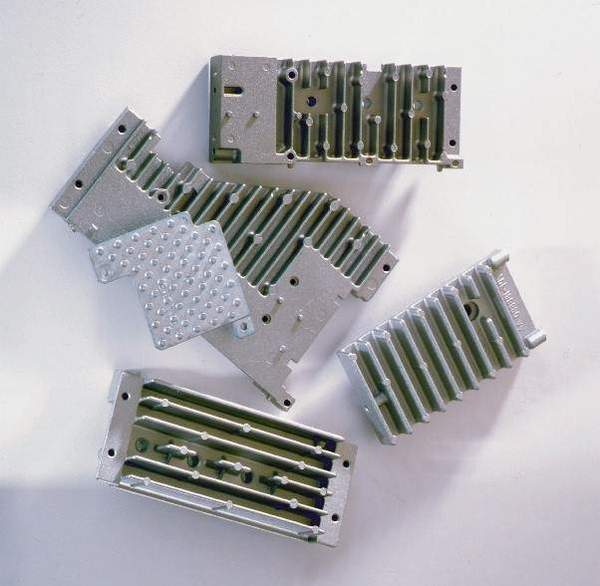Casting Study: Heat Sink
 Zinc die casting offers numerous advantages over aluminum extrusion in a number of heat sink applications. Die cast zinc heat sinks offer one-piece construction, increased design flexibility, and lower cost. One of the biggest advantages is that heat-dissipating fins can be incorporated into a frame, housing, or enclosure. Casting the fins as part of the housing can greatly lower costs by reducing the number of components and eliminating assembly costs. Die cast fins can be placed at any angle and be any shape, including porcupine quills and airfoil sections. Additionally, a single component that combines both housing and heat sink has greater thermal efficiency. Zinc’s excellent fluidity permits the production of thinner, closely spaced fins that provide a larger surface area but less volume. Zinc is also stronger, stiffer and tougher than extruded aluminum, die-cast aluminum, or magnesium. This provides high impact strengths along with excellent ductility.
Zinc die casting offers numerous advantages over aluminum extrusion in a number of heat sink applications. Die cast zinc heat sinks offer one-piece construction, increased design flexibility, and lower cost. One of the biggest advantages is that heat-dissipating fins can be incorporated into a frame, housing, or enclosure. Casting the fins as part of the housing can greatly lower costs by reducing the number of components and eliminating assembly costs. Die cast fins can be placed at any angle and be any shape, including porcupine quills and airfoil sections. Additionally, a single component that combines both housing and heat sink has greater thermal efficiency. Zinc’s excellent fluidity permits the production of thinner, closely spaced fins that provide a larger surface area but less volume. Zinc is also stronger, stiffer and tougher than extruded aluminum, die-cast aluminum, or magnesium. This provides high impact strengths along with excellent ductility.